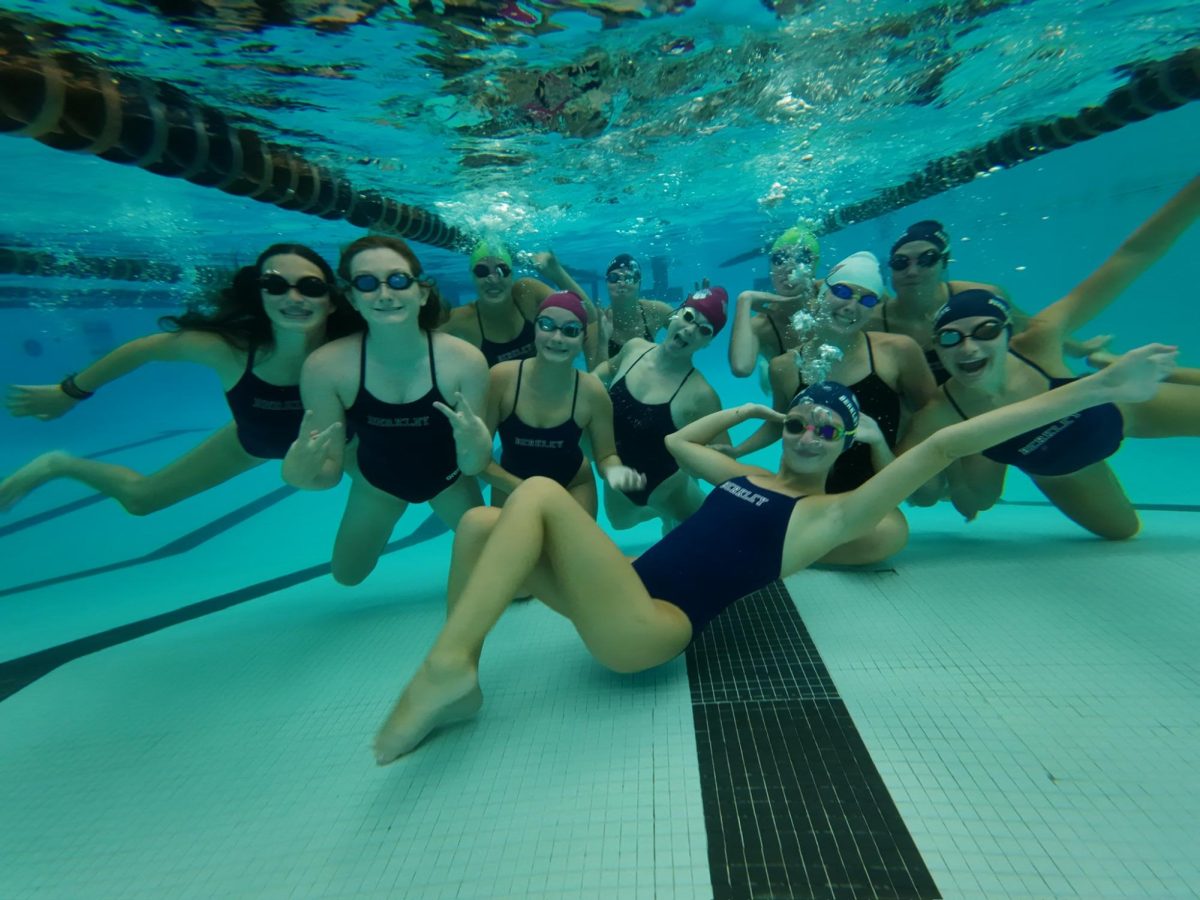Winter is on its way, but where’s the snow for ski season? The Berkley Ski Team, combined with Troy Athens, is led by two captains Patrick Oatley and Tessa Rontal, both juniors from Berkley High school. The team is excited to hit the slopes and start the season with practices and competitions. The team practices at Pine Knob Ski Resort in Clarkston, MI. They practice every Monday through Thursday, for two hours from 4 to 6 pm. Racing replaces some of those practices when it begins.
The season began three weeks ago, but the team only recently was able to ski as Pine Knob just opened. It’s concerning that there is a possibility there won’t be enough snow, which is what’s needed for peak skiing weather. It’s beneficial during the ski season to have fresh snow. It creates the perfect environment for skiing, making racing easier and more fun. Many ski resorts are using ski guns this year to make artificial snow. Pine Knob is one of the many creating artificial snow using a special chemical to create the snow called sodium Polyacrylate. The temperature must be below 32 degrees so they can blow snow 24/7. While speaking with 2nd year member of the ski team Ben Wine, he stated, “The fake snow is slower and stickier.” This means it’s harder to ski faster with skis sticking to the snow instead of easily gliding through making racing more difficult. Over the past couple of years the weather has been making it harder to set gates by there being less snow and the temperature rising. For practice, coaches would typically need to drill a foot into the snow to plant the gates. Last year it took so long for Pine Knob to have the right amount of snow to set the gates they had to be set early. This means that a course will be set up by laying out pairs of blue and red poles and the skier must pass through these “gates”. The issue with them being set too early is dirt and rocks get pulled onto the snow. When a skier runs over rocks it puts holes and bumps in the ski preventing the smooth glide wanted while skiing.
The team is pretty small and consists of 11 people with no JV team. While most teams consist of 20 people with 14 on varsity and around 7 on JV. When the team can’t ski they do team workouts. These workouts typically consist of leg workouts and drills, similar to what athletes do to prepare for the season. Team captain Tessa Rontal says, “I have been preparing for the season by getting in the gym. I also ski for a club called Pinnacle.” This ensures that even when the highschool season isn’t going on Tessa is able to practice and stay prepared for the season all year round. The first race will be in January. To prepare, they like to practice with the gates. During competition season there are divisionals and regionals. Divisionals are one of the races you get awards after you compete. Regionals are what determine whether or not you qualify for states. You have to make the top ten in the slalom or giant slalom race to compete up north with many other schools. Last year Tessa and Jonah Rontal made it to states. Rontal’s goal for the team this year is to qualify for states as a team.
Despite facing weather-related challenges, the Berkley team still remains working hard, from making the most of practices on the slopes and working out during off-snow days. They are pushing themselves toward their goal to qualify as a team for states and individually.









